The Damai Beach Resort, below Santubong Mountain on the shore of the South China Sea, is a popular weekend destination for Kuchingites. It is also a pleasant place for a nature walk through the coastal forest and a jumping-off point for boat trips into the nearby waters. My next few posts will cover a wonderful day on the water - May 13, 2011 - but this one will keep us on land, conflating two trips to Damai on April 14th and May 13th.
There are a number of exotic ways to see the sights of Damai...
But for the purposes of this post, we will simply stroll into the forest.
For those of us who are not botanists, a few of the trees are labelled. The labels may need a bit of interpretation: the proper scientific name of this tree is Calophyllum pulcherrimum.
The others are left for us to figure out. Anyone know what this is?
A few examples of cauliflory, or fruits (and flowers) growing directly from large branches or trunks. I believe that both of these are species of fig, but then, as I said, I am not a botanist.
Epiphytes, including this fern, cover many limbs in the forest.
Tiny, rocky streams flow through the forest into the sea. Here live a number of water skinks (Tropidophorus). The individual species are difficult to identify, and I don't know if the dark individual in the middle photograph is a different one from the other two, or simply a particularly dark animal.
Water striders straddle the stream surface...
...while damselflies dance along the banks. This bright green insect is a member of the forest-dwelling genus Vestalis, but it is probably impossible to tell which.
This lovely damselfly is Euphaea impar, a fairly common dweller on forested streams.
Butterflies are common along the forest edge. Here is a rather tattered Pearl Necklace (Bassarona dunya monara).
This Banded Swallowtail (Papilio demolion) is in better shape.
Dragonflies at Damai include the common and widespread members of the genus Neurothemis; this, I believe, is Neurothemis ramburii (note the swept-back rear edging to the dark marking on the hindwing).
Tiny, rocky streams flow through the forest into the sea. Here live a number of water skinks (Tropidophorus). The individual species are difficult to identify, and I don't know if the dark individual in the middle photograph is a different one from the other two, or simply a particularly dark animal.
Water striders straddle the stream surface...
...while damselflies dance along the banks. This bright green insect is a member of the forest-dwelling genus Vestalis, but it is probably impossible to tell which.
This lovely damselfly is Euphaea impar, a fairly common dweller on forested streams.
Butterflies are common along the forest edge. Here is a rather tattered Pearl Necklace (Bassarona dunya monara).
This Banded Swallowtail (Papilio demolion) is in better shape.
Dragonflies at Damai include the common and widespread members of the genus Neurothemis; this, I believe, is Neurothemis ramburii (note the swept-back rear edging to the dark marking on the hindwing).
Here's another common but attractive species: Orthetrum testaceum.
A clear entry in the common-but-gorgeous category is the tiny Orange-breasted Flowerpecker (Dicaeum trigonostigma), the commonest flowerpecker around Kuching. This one seems to be loading up on melastome berries.
More subdued, but still attractive, is this Spectacled Bulbul (Pycnonotus erythropthalmos), one of a group of frustratingly similar bulbuls. Notice the distinctive eye-ring on this one.
Certainly the most striking animals on our stroll are these Silvered Langurs (Presbytis cristata), large, leaf-eating monkeys that have become quite used to the tourists around the resort. Though you might not think it from the numbers around Damai, this is a species in decline, listed as Near Threatened by IUCN. Its habitat, mostly coastal and riverside forest, is disappearing under the advance of oil palm, and it is still hunted in Sarawak.


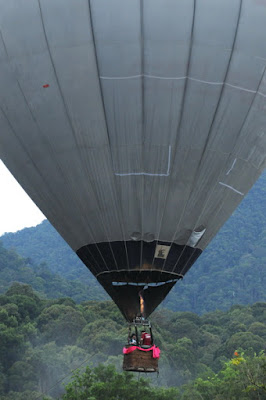

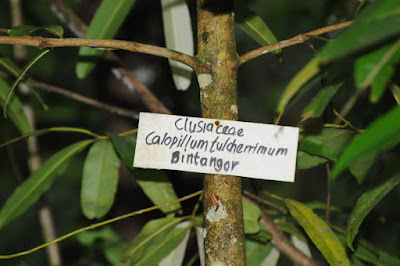






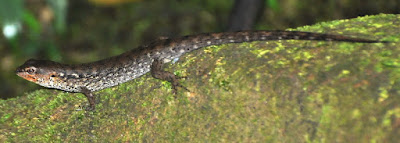


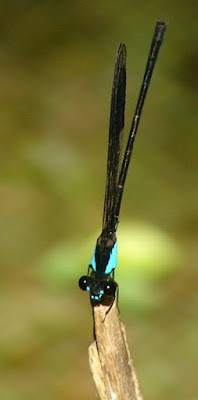


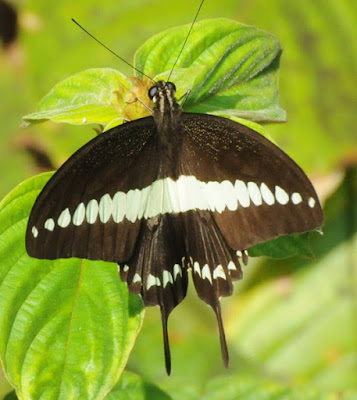





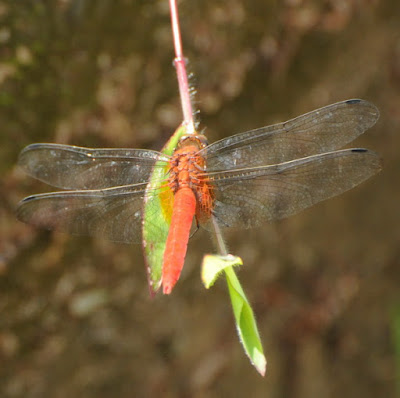






No comments:
Post a Comment